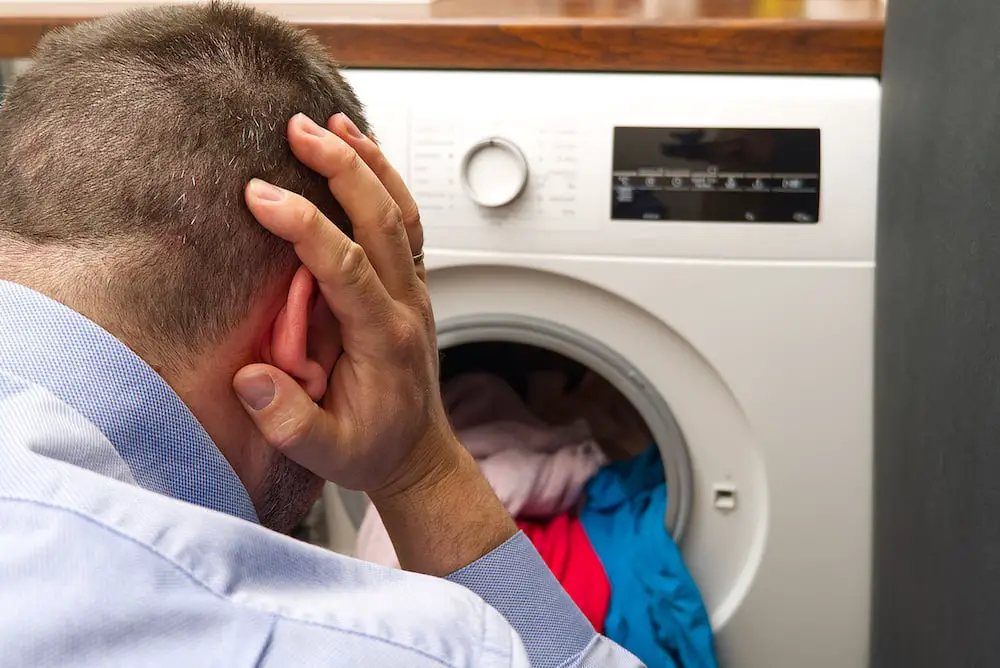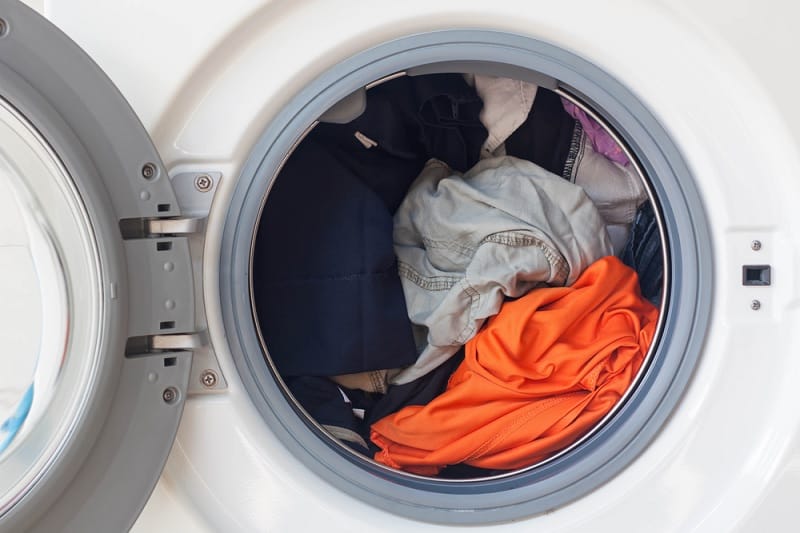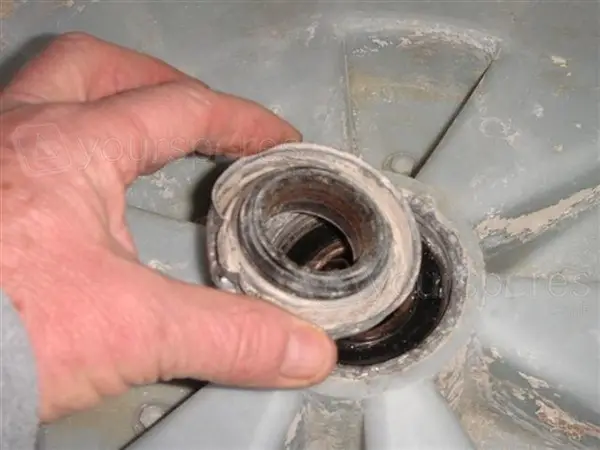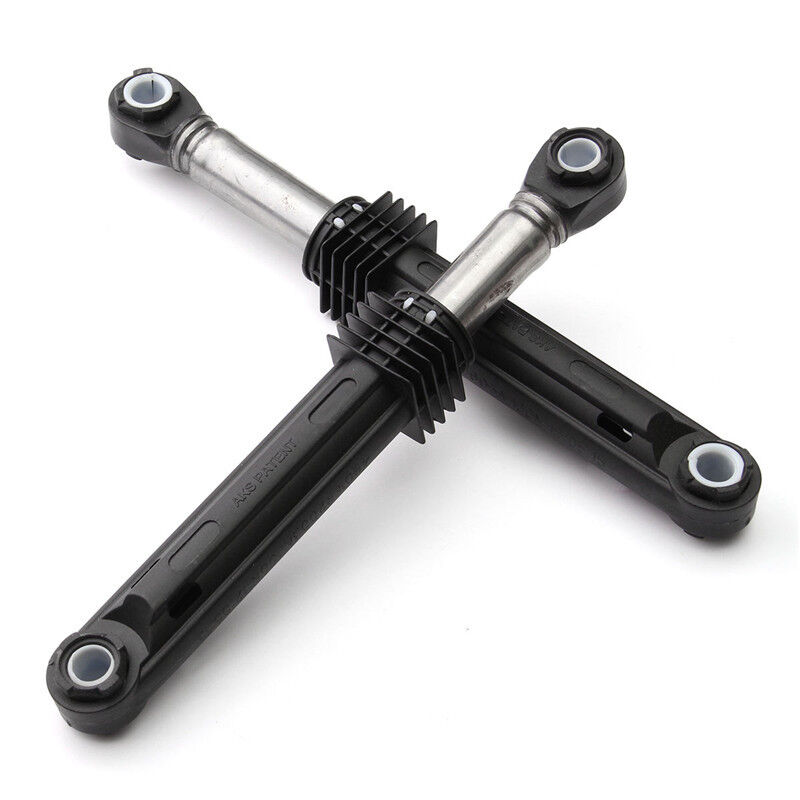
Having a noisy washing machine can be quite a nuisance, especially if you’re trying to get some peace and quiet while doing your laundry.
The constant clanking and rumbling can disrupt your daily routine and leave you wondering, “Why is my washing machine so loud?”
Common Causes of a Noisy Washing Machine
1- Unbalanced Load

One of the most common reasons for a noisy washing machine is an unbalanced load.
When the clothes inside the drum are unevenly distributed, it can cause the machine to shake and vibrate excessively, resulting in a loud noise.
How To Fix
-
Check And Balance The Load
To address an unbalanced load, follow these steps:
- Pause the washing machine mid-cycle.
- Open the door and redistribute the clothes evenly in the drum.
- Avoid overstuffing the drum and ensure that heavier items are distributed evenly.
- Close the door and resume the cycle.
By balancing the load, you can minimize the noise caused by an unbalanced washing machine.
2- Worn Out Drum Bearings

Another culprit behind a noisy washing machine is worn-out drum bearings. Over time, the constant friction and movement can cause the bearings to deteriorate, resulting in a loud grinding or rumbling noise during the wash or spin cycle.
How To Fix
-
Replace Worn Out Drum Bearings
Replacing worn-out drum bearings is a complex task best left to professionals. Contact a qualified technician who can diagnose the issue and replace the bearings if necessary.
This will restore the smooth operation of your washing machine and eliminate the noise.
3- Loose or Damaged Belts
The belts in a washing machine are responsible for transferring power from the motor to the drum and other moving parts.
If these belts become loose or damaged, they can generate a loud noise during operation.
How To Fix
-
Tighten Or Replace Loose Belts
To tighten or replace loose belts, follow these steps:
- Disconnect the power supply to the washing machine.
- Locate the belts in the machine.
- Check for signs of wear, cracks, or looseness.
- Tighten the belts if they are loose.
- If the belts are damaged, purchase suitable replacements.
- Install the new belts following the manufacturer’s instructions.
Properly tightened or replaced belts will reduce the noise generated by the washing machine.
4- Faulty Motor
A faulty motor can also contribute to a noisy washing machine. If the motor’s bearings are worn out or if it’s experiencing electrical issues, it may produce loud and unusual sounds during operation.
How To Fix
-
Address A Faulty Motor
If you suspect a faulty motor, it’s best to seek professional help. A qualified technician can diagnose the motor issue and perform any necessary repairs or replacements.
This will ensure the smooth and noise-free operation of your washing machine.
5- Clogged Water Inlet Valve
A clogged water inlet valve can cause a washing machine to make loud noises, especially during the fill or rinse cycle.
When the valve is obstructed, the water flow can become irregular, leading to a vibrating or rattling noise.
How To Fix
-
Clean Or Replace A Clogged Water Inlet Valve
To clean or replace a clogged water inlet valve, follow these steps:
- Turn off the water supply to the washing machine.
- Disconnect the hoses connected to the inlet valve.
- Inspect the valve for any debris or mineral deposits.
- Clean the valve thoroughly using a soft brush and water.
- If the valve is severely clogged or damaged, replace it with a new one.
- Reconnect the hoses and turn on the water supply.
Cleaning or replacing the water inlet valve will prevent irregular water flow and reduce the associated noise.
6- Damaged Shock Absorbers

Washing machines are equipped with shock absorbers to dampen the vibrations during operation.
If these shock absorbers become damaged or worn out, the machine may produce excessive noise and shaking.
How To Fix
-
Replace Damaged Shock Absorbers
Replacing damaged shock absorbers requires professional expertise. Contact a qualified technician who can inspect your washing machine and replace the shock absorbers if necessary.
7- Faulty Pump
A faulty pump can result in a loud noise in a washing machine, particularly during the drain or spin cycle.
When the pump fails to work efficiently, it can cause the machine to vibrate and produce an irritating sound.
How To Fix
-
Fix Or Replace A Faulty Pump
To fix or replace a faulty pump, follow these steps:
- Disconnect the power supply to the washing machine.
- Locate the pump in the machine.
- Check for any blockages or damage.
- Clear any debris from the pump.
- Test the pump to see if it functions properly.
- If the pump is beyond repair, purchase a suitable replacement.
- Install the new pump following the manufacturer’s instructions.
A functional pump will ensure proper drainage and reduce noise during the drain and spin cycles.
8- Loose Components
Loose components within the washing machine can also contribute to the noise issue. Over time, screws, bolts, or other fasteners may become loose due to the machine’s vibrations.
How To Fix
-
Tighten Loose Components
To tighten loose components, follow these steps:
- Disconnect the power supply to the washing machine.
- Carefully inspect the machine for any loose screws, bolts, or fasteners.
- Tighten the loose components using the appropriate tools.
- Pay attention to motor mounts, drum brackets, and other critical parts.
- Once all components are properly tightened, reconnect the power supply.
Securing loose components will minimize vibrations and reduce the noise produced by the washing machine.
9- Improper Installation
Sometimes, a noisy washing machine can be attributed to improper installation. If the machine is not level or if it’s not properly secured to the floor, it can cause excessive vibrations and noise during operation.
How To Fix
-
Ensure Proper Installation
To ensure proper installation, follow these steps:
- Use a spirit level to check if the washing machine is level.
- Adjust the machine’s feet accordingly to achieve balance.
- Make sure the machine is securely fastened to the floor or cabinet.
- If necessary, consult the installation manual or contact a professional for assistance.
Proper installation will prevent unnecessary movement and reduce noise during operation.


